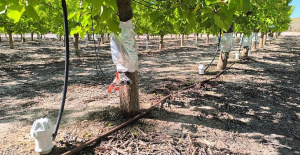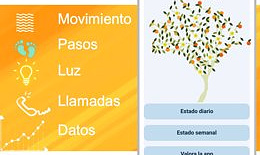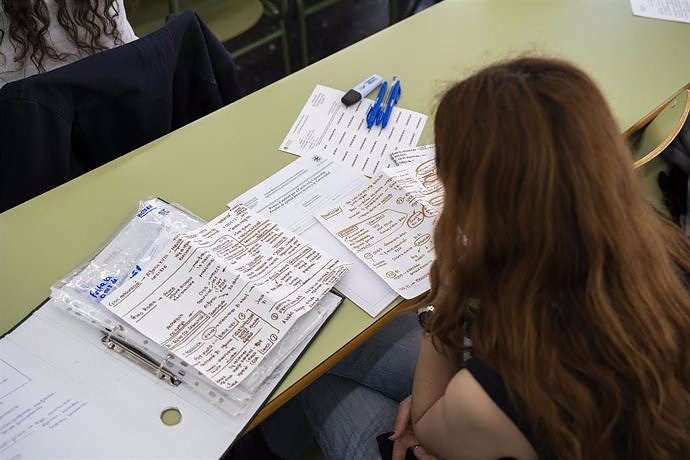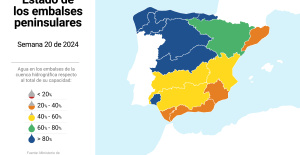The tests will have a competitive design and will require "creativity, critical thinking, reflection and maturity" from the students.
MADRID, 18 Mar. (EUROPA PRESS) -
The new Baccalaureate Evaluation for University Access (EBAU), which will begin to be applied from the next academic year, will include multiple choice questions, spelling mistakes will lower the grade in the exams by 10% and students will be able to choose between different questions, although they will require that they have studied the entire syllabus.
This is reflected in the draft of the draft royal decree of the new EBAU, to which Europa Press has had access, prepared by the Ministry of Education, Vocational Training and Sports and the Ministry of Science, Innovation and Universities.
The document establishes that the exercises will be structured into different sections which, in turn, may contain one or more questions or tasks. These may require closed, semi-constructed or open responses, provided that in each of the exercises the score assigned to the total number of open and semi-constructed response questions or tasks reaches at least 70 percent.
In each subject, a single exercise model will be delivered. However, in some sections the possibility of choosing between several questions or tasks may be included, as long as this choice does not imply a reduction in the number of specific competencies being evaluated.
In those exercises in which the proposed questions or tasks require the production of texts by the students, the assessment corresponding to the coherence, cohesion, grammatical, lexical and orthographic correctness of the texts produced, as well as their presentation, cannot be be less than 10 percent of the grade corresponding to the question or task.
However, the proposal of the new EBAU specifies that the application of these parameters that lower the grade by 10 percent due to spelling and grammatical errors "may be made more flexible in the case of students with a specific need for educational support."
The university entrance test will consist of four or, in the case of autonomous communities with a co-official language, five exercises that will cover the following subjects: Spanish Language and Literature II and, if applicable, Co-official Language and Literature II; History or Philosophy, at the students' choice; Foreign Language II; and the specific mandatory subject.
The exercises of the new test will have a competency design that "will allow checking the degree of achievement of the specific competencies of the subjects"; and will require from students "creativity and the capacity for critical thinking, reflection and maturity" in the written resolution of a series of questions or tasks appropriate to the specific competencies evaluated.
The questions or tasks will be contextualized in artistic, scientific, humanistic and technological environments and, preferably, in environments close to the students' lives.
As in the previous EBAU model, each of the exercises will last 90 minutes and a rest will be established between consecutive tests of at least 30 minutes. The period used to extend the time for taking tests for students with specific needs for educational support to whom such a measure has been prescribed will not be counted as a rest period.
"Both the curricular elements subject to evaluation, as well as the number and type of questions or tasks, will be adapted to the duration of the exercise. To this end, it will be taken into account that students will need to dedicate significant time to both reading and analysis. of the possible documentation provided, as well as the design of the strategy for resolving the questions or tasks posed," the document states.
In the event that the questions or tasks require it, to carry out the exercises of the different subjects, students may use documents or auxiliary tools, such as dictionaries, calculators, forms or tables.
In any case, the standard clarifies that the use of this material will be conditioned to the characteristics of each subject and the applicable evaluation criteria. To this end, the organizing committees of the test will establish the materials that the students may use and, where appropriate, the material that may under no circumstances be used.

 Exploring Cardano: Inner Workings and Advantages of this Cryptocurrency
Exploring Cardano: Inner Workings and Advantages of this Cryptocurrency Seville.- Economy.- Innova.- STSA inaugurates its new painting and sealing hangar in San Pablo, for 18 million
Seville.- Economy.- Innova.- STSA inaugurates its new painting and sealing hangar in San Pablo, for 18 million Innova.- More than 300 volunteers join the Andalucía Compromiso Digital network in one month to facilitate access to ICT
Innova.- More than 300 volunteers join the Andalucía Compromiso Digital network in one month to facilitate access to ICT Innova.-AMP.- Ayesa acquires 51% of Sadiel, which will create new technological engineering products and expand markets
Innova.-AMP.- Ayesa acquires 51% of Sadiel, which will create new technological engineering products and expand markets Putin begins his fifth term demanding the "security" and "unity" of Russia
Putin begins his fifth term demanding the "security" and "unity" of Russia Almeida points to the death of two workers after being trapped under an 8-ton slab in Madrid
Almeida points to the death of two workers after being trapped under an 8-ton slab in Madrid Armengol and two former senior officials from the Balearic Islands, summoned by the Congressional commission on masks
Armengol and two former senior officials from the Balearic Islands, summoned by the Congressional commission on masks Puente assures that if he had known the impact of his words on Milei he would not have said them
Puente assures that if he had known the impact of his words on Milei he would not have said them How Blockchain in being used to shape the future
How Blockchain in being used to shape the future Not just BTC and ETH: Here Are Some More Interesting Coins Worth Focusing on
Not just BTC and ETH: Here Are Some More Interesting Coins Worth Focusing on They develop devices for the precise diagnosis of cancer patients
They develop devices for the precise diagnosis of cancer patients UMH researchers are working on a high-quality apricot crop that requires less irrigation water
UMH researchers are working on a high-quality apricot crop that requires less irrigation water The UPV develops an application to improve the quality of life of patients with glioblastoma
The UPV develops an application to improve the quality of life of patients with glioblastoma A sensor system obtains the fingerprint of essential oils and detects if they have been adulterated
A sensor system obtains the fingerprint of essential oils and detects if they have been adulterated A million people demonstrate in France against Macron's pension reform
A million people demonstrate in France against Macron's pension reform Russia launches several missiles against "critical infrastructure" in the city of Zaporizhia
Russia launches several missiles against "critical infrastructure" in the city of Zaporizhia A "procession" remembers the dead of the Calabria shipwreck as bodies continue to wash up on the shore
A "procession" remembers the dead of the Calabria shipwreck as bodies continue to wash up on the shore Prison sentences handed down for three prominent Hong Kong pro-democracy activists
Prison sentences handed down for three prominent Hong Kong pro-democracy activists ETH continues to leave trading platforms, Ethereum balance on exchanges lowest in 3 years
ETH continues to leave trading platforms, Ethereum balance on exchanges lowest in 3 years Investors invest $450 million in Consensys, Ethereum incubator now valued at $7 billion
Investors invest $450 million in Consensys, Ethereum incubator now valued at $7 billion Alchemy Integrates Ethereum L2 Product Starknet to Enhance Web3 Scalability at a Price 100x Lower Than L1 Fees
Alchemy Integrates Ethereum L2 Product Starknet to Enhance Web3 Scalability at a Price 100x Lower Than L1 Fees Mining Report: Bitcoin's Electricity Consumption Declines by 25% in Q1 2022
Mining Report: Bitcoin's Electricity Consumption Declines by 25% in Q1 2022 Oil-to-Bitcoin Mining Firm Crusoe Energy Systems Raised $505 Million
Oil-to-Bitcoin Mining Firm Crusoe Energy Systems Raised $505 Million Microbt reveals the latest Bitcoin mining rigs -- Machines produce up to 126 TH/s with custom 5nm chip design
Microbt reveals the latest Bitcoin mining rigs -- Machines produce up to 126 TH/s with custom 5nm chip design Bitcoin's Mining Difficulty Hits a Lifetime High, With More Than 90% of BTC Supply Issued
Bitcoin's Mining Difficulty Hits a Lifetime High, With More Than 90% of BTC Supply Issued The Biggest Movers are Near, EOS, and RUNE during Friday's Selloff
The Biggest Movers are Near, EOS, and RUNE during Friday's Selloff Global Markets Spooked by a Hawkish Fed and Covid, Stocks and Crypto Gain After Musk Buys Twitter
Global Markets Spooked by a Hawkish Fed and Covid, Stocks and Crypto Gain After Musk Buys Twitter Bitso to offset carbon emissions from the Trading Platform's ERC20, ETH, and BTC Transactions
Bitso to offset carbon emissions from the Trading Platform's ERC20, ETH, and BTC Transactions Draftkings Announces 2022 College Hoops NFT Selection for March Madness
Draftkings Announces 2022 College Hoops NFT Selection for March Madness
























